The term “castle” conjures images of remote, turreted strongholds in Europe, the Middle East and Asia. But while America’s castles are admittedly a bit newer, they’re no less impressive.
Mohonk Mountain House
New Paltz, New York
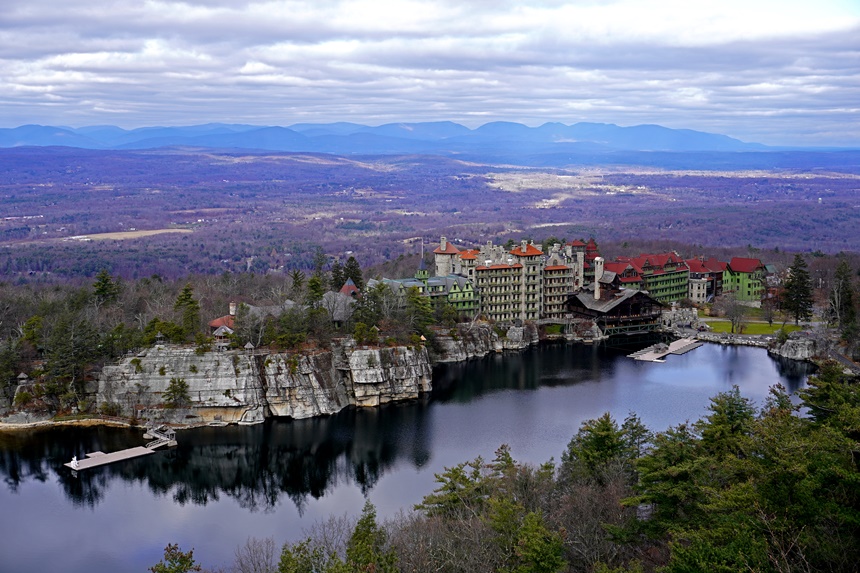
Picking my way through the fog on this winding mountain road, I have no trouble obeying the periodic signs that urge me to drive “slowly and quietly.” Presently, the tunnel of trees falls away. I make a sharp turn. Instinctively, I roll to a stop.
Gray on gray in the swirling mist, the outline of a great Victorian castle fills my field of view. From their turreted tips, stone walls plunge vertically, seeming to disappear into the depths of a black mountaintop lake, its dark, glassy surface alive with its own dancing, steamy wisps. Beyond, on the narrow lake’s opposite shore, the profile of a sloping mountain would barely register if not for the stone tower standing at its apex, piercing the fog with a bright guiding light.
“I’m at Hogwarts,” I gasp.
Not quite, but close: Close enough for Mohonk Mountain House, sitting at 1,300 feet atop the Shawangunk Mountains, 90 miles north of New York City, to do a brisk business selling the complete set of Harry Potter books in its gift shop.
Celebrating its 155th season in 2024, the 259-room hotel reigns as a one-of-a-kind fantasia of 19th century Victorian grandeur mixed with the era’s vogue for communing with nature without sacrificing the comforts of even the most lavish home. Eighty-five miles of mountain trails, open to the public, radiate from the castle keep, many dotted with rustic wood shelters that have given rest to visitors ranging from Booker T. Washington to Teddy Roosevelt. (Hanging near the front desk is a vintage guest book page signed: “Theodore Roosevelt, Washington, D.C.)
Like every self-respecting castle, Mohonk even has its own royalty: The Smiley family has owned the place from its inception, beginning with Albert and Alfred Smiley, twin Quaker brothers from Connecticut.
“My ancestors built this hotel with the same native quartz conglomerate that the mountain is made of — that’s why it seems to rise out of the rock that surrounds the lake,” says Mohonk’s president, Eric Gullickson, representing the fifth generation of Smileys running the place. (His aunt, Nina Smiley, used to manage the property with her late husband; now she serves as Director of Mindfulness Programming, conducting meditation sessions in open-air pavilions on the Mohonk grounds.)
Besides the aesthetic value, Gullickson adds, the brothers also had a practical matter in mind when they decided to build with stone: In the nearby Catskills, wooden resorts were burning down with alarming regularity.
“They wanted to avoid that fate,” he says. “And, I’d have to say, it worked.”
Mohonk’s castle vibe isn’t just on the outside: Wander past the front desk and you’ll find The Parlor, a century-old gathering room with not one but two five-foot-high fireplaces that seem transported straight from Camelot. And the enormous, timbered dining room is so Harry Potter-like you’ll look upward expecting to find floating candles.
Hotel guests and day visitors alike nearly always take the half-hour walk around Mohonk Lake, following a century-old trail that hugs the eastern shoreline before rising halfway up the cliffs that define the lake’s west side. They’ll inevitably stop on the opposite shore to gaze at the mountaintop castle, watch its pointed reflection dance on the rippling water, and listen to the silence.
An hour-and-a-half to the south, the streets of Manhattan scream with traffic and commerce. Here, the loudest sound you’ll hear is a cawing crow, skimming the water’s surface before arcing skyward, then banking gently as the castle wall approaches.
Montezuma Castle
Camp Verde, Arizona
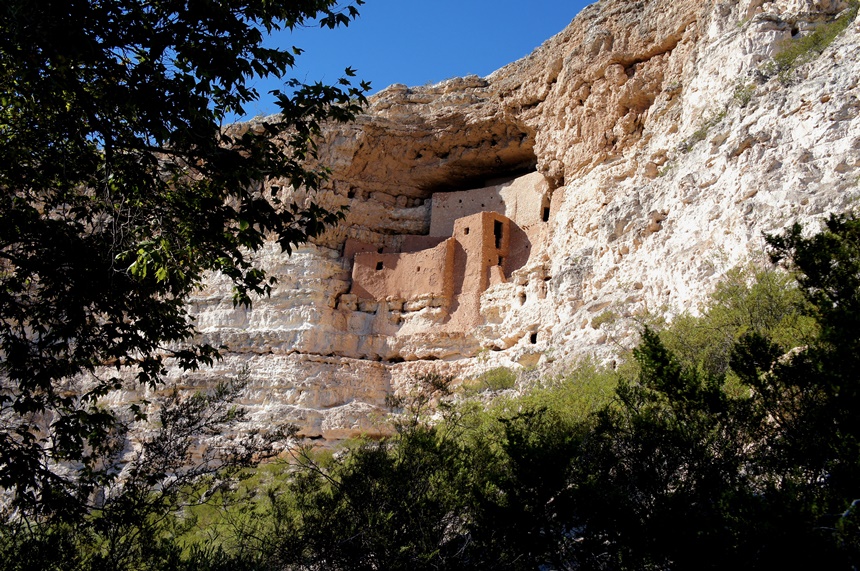
Misnamed by modern-day tourists from the get-go, this remarkably preserved millennium-old cliff dwelling was abandoned by the society that built it long before the legendary Aztec emperor was even born.
Still, the indigenous Sinagua people constructed this five-story, 20-room fortress, 90 feet up a sheer limestone cliff with castle-like intentions: To discourage invaders and to avoid calamitous flooding from Beaver Creek below. In its long-ago prime, the castle was home to as many as 50 people who used ladders to commute between their “apartments” and their farm plots below.
Looters had a field day here after the castle was rediscovered in the late 1800s, but now the rangers at Montezuma Castle National Monument make sure everyone stays on their designated paths. Just an hour-and-a-half north of Phoenix, the place is a short drive to the distant past.
Belvedere Castle
Central Park, New York City
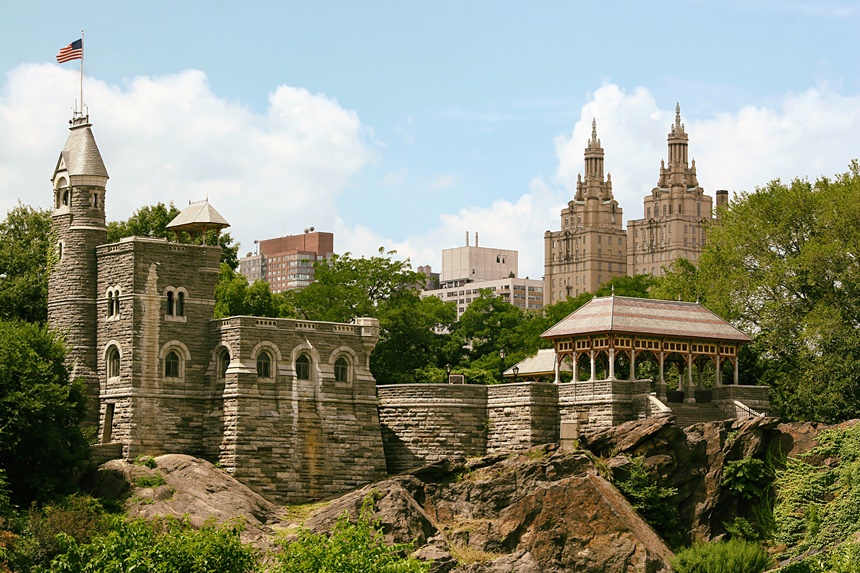
Motorists and taxi riders who cut across Manhattan’s Central Park at 79th Street might not even notice the rock-walled Civil War-era tunnel they rumble through — and they almost certainly don’t realize that just a few feet above them, created almost entirely from excavated Central Park stone, is an honest-to-goodness castle.
Belvedere Castle was built as a “folly” – a purely ornamental structure – to crown 130-foot-high Vista Rock. For a century or so it was a beloved feature of the park but, like just about everything else in the Big Apple, in the 1970s and ’80s Belvedere fell prey to vandals who defaced it and drug dealers who hid in its Victorian shadows.
Happily, today the castle, which now houses a Central Park visitor’s center, has been restored to its former glory. Also, since the castle is about as far away from bright lights as you can get in Manhattan, the Central Park Conservancy sponsors regular stargazing events there.
Sleeping Beauty’s Castle
Disneyland, Anaheim, California

Yep, Walt Disney’s fanciful 77-foot-tall castle, standing at the hub of his landmark Anaheim theme park, qualifies as a genuine castle, inspired by Germany’s Neuschwanstein Castle. It even has a working drawbridge that has been lowered only twice: in 1955, for the park’s opening, and in 1983, after the park’s Fantasyland was rededicated.
And if you’re wondering about the castle’s royal family, look no further than above the entrance: Three lions, representing the Disney family crest.
Castle Gatehouse, Washington Aqueduct
Washington, D.C.
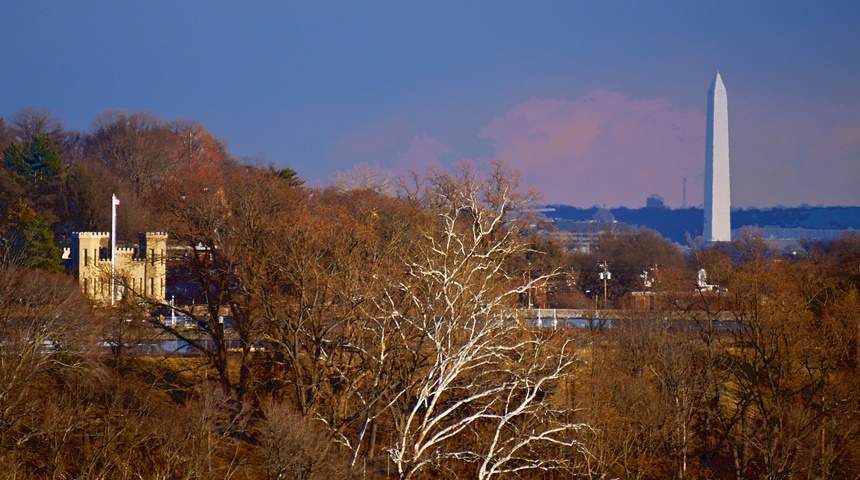
Tucked into a corner of Washington, D.C.’s Palisades neighborhood, this miniature castle has stood guard over the Georgetown Reservoir, just above the Potomac River, since 1899.
Walk past the castle later at night, when traffic on nearby MacArthur Boulevard has died down a bit, and you’ll hear rushing water. That’s the sound of the castle’s sluice gate which, in a striking example of democracy in action, helps control the flow of water for everyone in D.C., from homeless shelter residents to the President of the United States.
D.C. residents who get a little homesick for their home town need only seek out the nearest Army Corps of Engineers project: The Corps’ informational signs always bear a schematic image of the Castle Gatehouse.
Hearst Castle
San Simeon, California
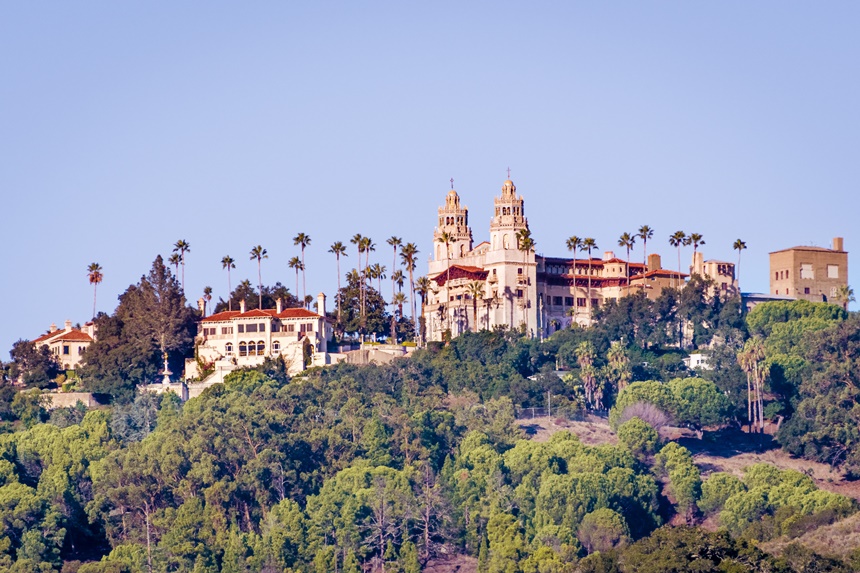
The architect Julia Morgan designed more than 700 homes, churches, and public buildings during her long career, but today she is famous for a single project, one that consumed her attention for nearly 30 years: La Cuesta Encantada (“The Enchanted Hill”), better known as Hearst Castle.
On a hilltop looming over the central California coast, within grunting distance of a colony of elephant seals, publishing magnate William Randolph Hearst commissioned Morgan to build a family retreat. The assignment soon exploded into one of the most ambitious private residence projects of the 20th century.
The official count: 68,500 square feet, 115 rooms in the main house, 46 rooms in the scattered guest houses. The colonnaded outdoor pool consumes 345,000 gallons of water.
Hearst, along with his longtime mistress Marion Davies, left his castle for good in 1947. Today, visitors roam his hallways ogling the artworks and architectural elements that flowed through the gates in an endless procession of crates from around the world.
George Bernard Shaw reportedly summed it up: Hearst Castle is “the place God would have built if He had the money.”
Iolani Palace
Honolulu, Hawaii
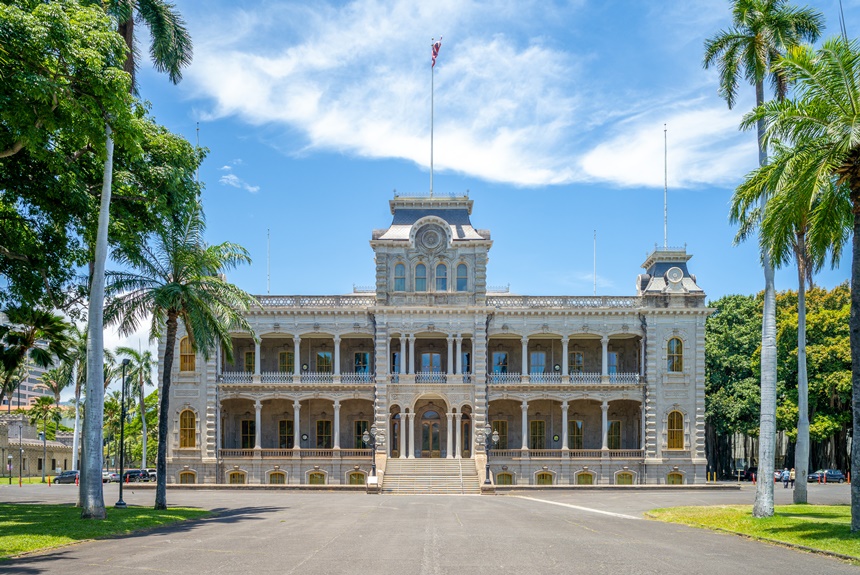
There is only one legit royal palace in all of the United States, and it sits in downtown Honolulu, a daily reminder that for nearly a century, until the U.S. forcibly took over in 1898, these islands were governed by monarchs.
The plush interiors of Iolani Palace rival the most lavish Europe has to offer. The crimson-and-gold Throne Room is dominated by the thrones of King Kalakaua and Queen Kapiolani (who seldom sat on them, preferring to mingle with their guests). Also in this room, Hawaii’s last monarch, Queen Lili’uokalani was put on trial for trying to resist American pressure to abolish the monarchy. She was forced to abdicate (and was imprisoned in the upstairs apartments for eight months), but every time Hawaiians sing “Aloha ’Oe,” they’re subtly honoring Lili’uokalani, who wrote the Islands’ most famous song.
Coral Castle
Miami-Dade County, Florida
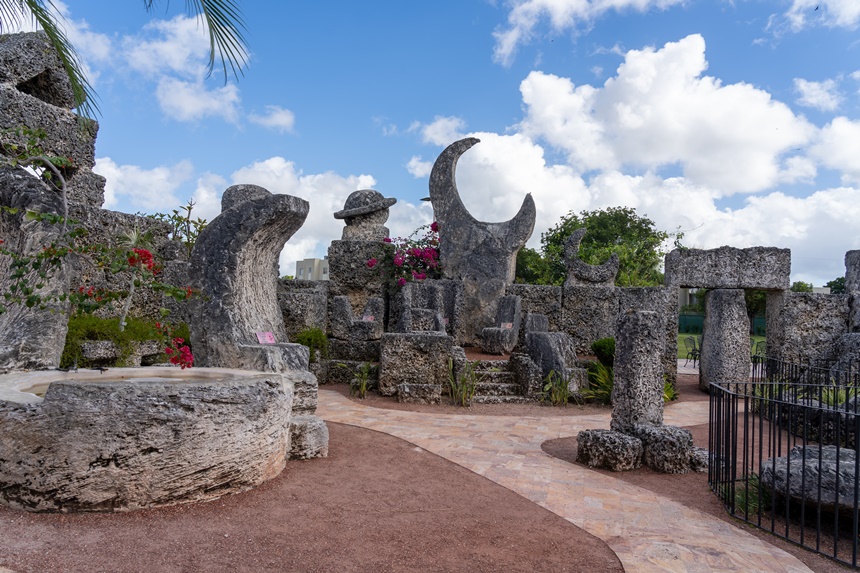
As a tourism magnet, mid-century, pre-Disney Florida had its alligator farms and monkey jungles and Everglades airboat rides — but there was nothing quite like this quirky collection of enormous coral blocks, some weighing 30 tons, erected by a loner who asked guests to drop a dime in a box for entry.
A Latvian immigrant named Edward Leedskalnin spent 28 years on his castle. He jealously guarded the secret to how he single-handedly quarried, erected, and finished the enormous walls and carved installations, saying only that he utilized something called a “perpetual motion holder.” Some teenagers swore they witnessed him levitating the stones like balloons.
Stories like that made Leedskalnin’s project a must-see attraction for motorists, even after his sudden death in 1951. He called the place Rock Gate. Fortunately, for purposes of this story, his successors changed the name to Coral Castle.
Become a Saturday Evening Post member and enjoy unlimited access. Subscribe now
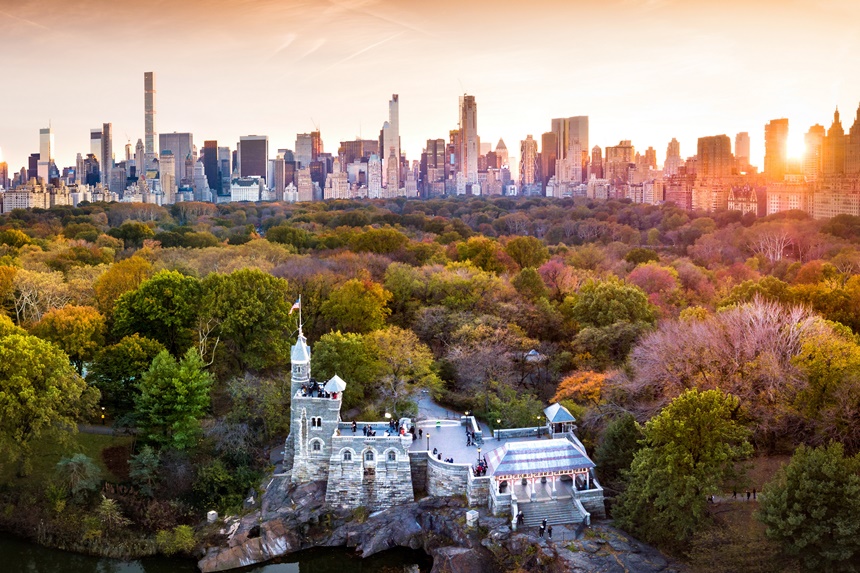
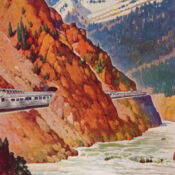

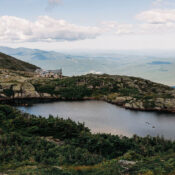
Comments
Wow! At least one of these was profiled on a fun, old A&E Network series also called “America’s Castles.”